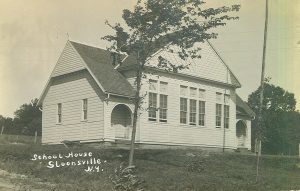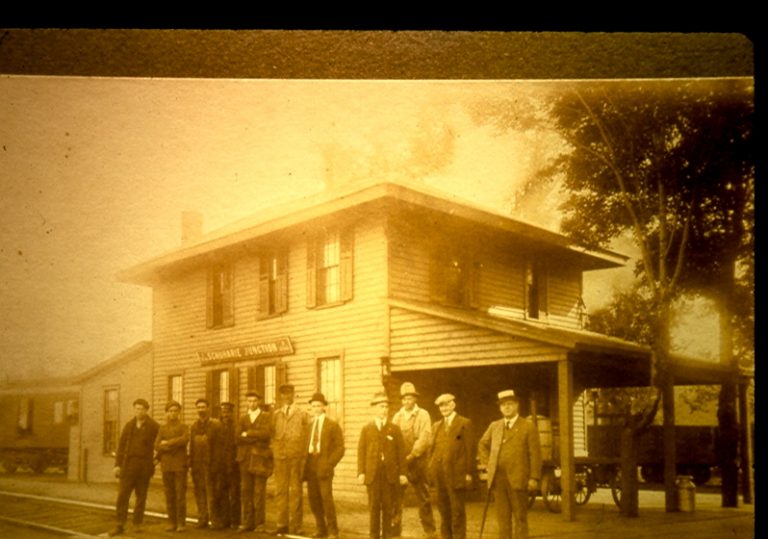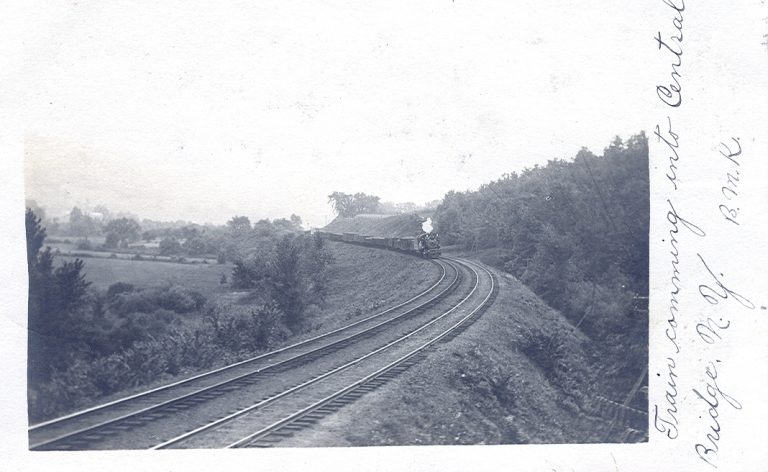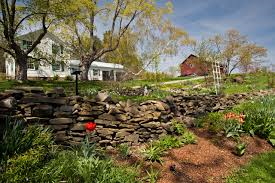A Brief History of the Town of Esperance
Submitted by Kenneth Jones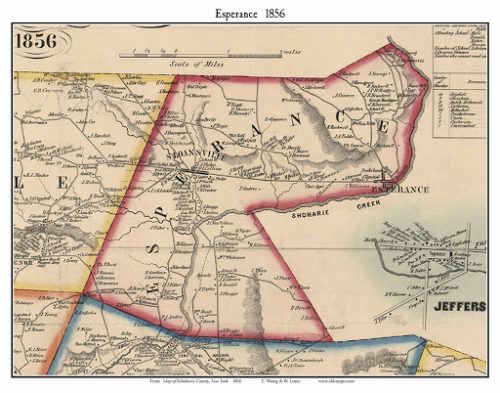
Town Historian
The Town of Esperance was originally a part of the Town of Schoharie. The earliest European settlement was at Kniskern’s Dorf, a land patent purchased in 1729 near the junction of the Cobleskill and Schoharie Creeks. Artifacts left behind by Native Americans go back thousands of years. These are usually found where small feeder streams flow into the Schoharie.
An early Native American trail ran through Sloansville heading towards Canajoharie and just above the Village of Sloansville was a Stone Heap created by the Native Americans over many years that was documented by Missionary Gideon Hawley in the mid 1700’s. It was removed in the 1820’s by a nearby farmer. It had been a boundary marker for the Stone Heap Patent and was later a trail used by the Palatines to visit their relatives in Montgomery County.
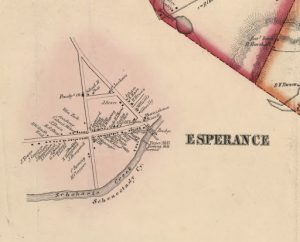 The Palatine settlement was like a cooperative, owned at one time by the settlers as a group. By the mid 1700’s lots were being surveyed and the farms divided among the families. Not much growth occurred until after the American Revolution, since there was much destruction of Kniskern’s Dorf at that time.
The Palatine settlement was like a cooperative, owned at one time by the settlers as a group. By the mid 1700’s lots were being surveyed and the farms divided among the families. Not much growth occurred until after the American Revolution, since there was much destruction of Kniskern’s Dorf at that time.
In 1792 a law was passed putting this area in the Western Road District and a State Road and Bridge across the Schoharie (built in 1793) at what was called “State Bridge”. To accommodate the workers on the road and early travelers, the earliest farms started to take in borders.
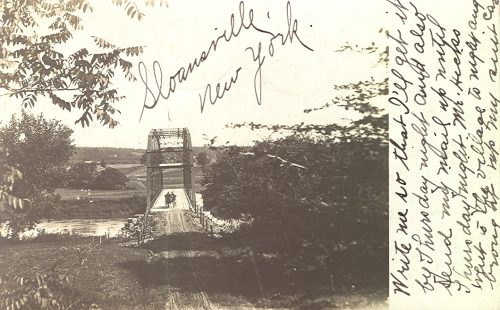 The area around the Bridge was surveyed and broken up into building lots by its owner Harmonous Ten Eyck, a merchant of Albany. The lots sold slowly; and William North of Duanesburg seeing an opportunity, purchases the lots from the Ten Eycks in 1806. The Post Office had been established in a Hotel near the Bridge in 1805 under the name Schoharie Bridge.
The area around the Bridge was surveyed and broken up into building lots by its owner Harmonous Ten Eyck, a merchant of Albany. The lots sold slowly; and William North of Duanesburg seeing an opportunity, purchases the lots from the Ten Eycks in 1806. The Post Office had been established in a Hotel near the Bridge in 1805 under the name Schoharie Bridge.
William North gave it the name “Esperance” the French word for “Hope”. The village was later incorporated in 1818 and had the first fire department and engine in the county.
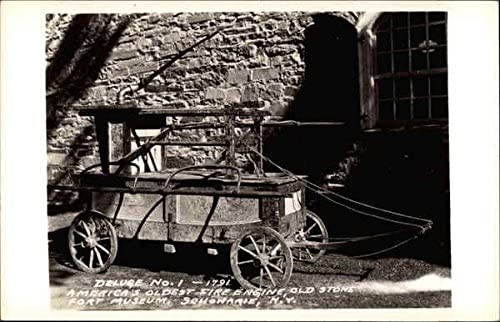 The Deluge, a used pumper said to date from 1731 is displayed at the Old Stone Fort in Schoharie. In 1799 the State could no longer keep up with the demand for roads and bridges in New York, so investors bought shares in Turnpike Companies hoping the improved highway would benefit them as land owners along its route.
The Deluge, a used pumper said to date from 1731 is displayed at the Old Stone Fort in Schoharie. In 1799 the State could no longer keep up with the demand for roads and bridges in New York, so investors bought shares in Turnpike Companies hoping the improved highway would benefit them as land owners along its route.
The State Bridge was washed away in 1798, so the Great Western Turnpike Co. was formed. William North was an office holder in both the State and Private concerns to construct the road. In 1812 Theodore Burr built an impressive two lane covered bridge spanning 300 feet across the Schoharie Creek. A toll house was located on the Esperance side to collect tolls and the Brown Brothers of Sloansville were early gate keepers there. To avoid paying tolls, shunpike roads were formed and travelers still forded the creek when possible to avoid the bridge toll. Over 700 teams a day crossed this bridge and traffic was heavy during the War of 1812.
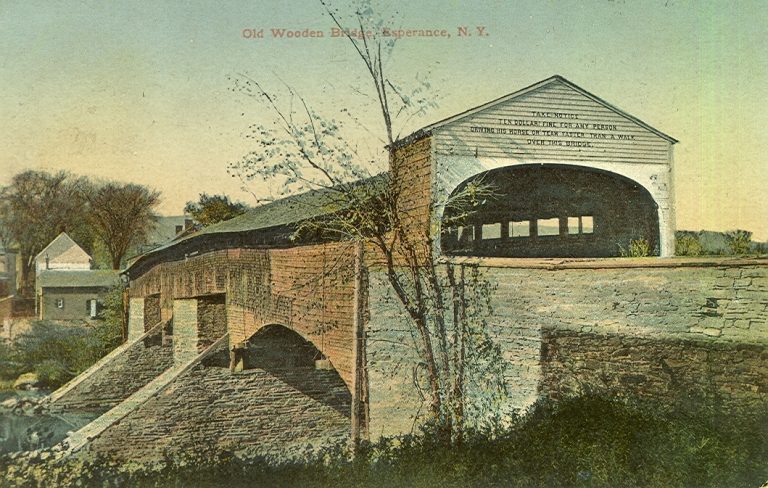
Around the time of incorporation, the Sloans who were active business men west of Esperance Village got the post office named after them and the hamlet became Sloansville after John R. Sloan, the postmaster. Later this family moved to Illinois in the late 1830’s, but the Browns remained.
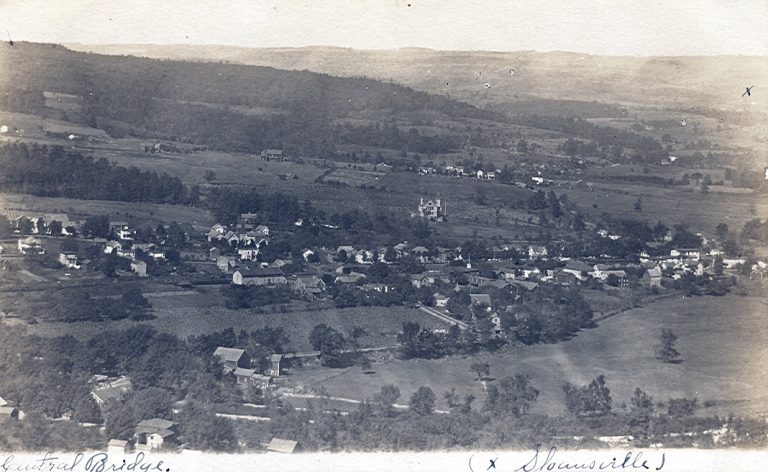 More hotels and stores were built and business was good. Another bridge was built across the Schoharie Creek near Sam Smith’s Hotel south of Sloansville near Kniskern’s Dorf. The hamlet was called Smithville and later when the Post Office was established “Central Bridge”.
More hotels and stores were built and business was good. Another bridge was built across the Schoharie Creek near Sam Smith’s Hotel south of Sloansville near Kniskern’s Dorf. The hamlet was called Smithville and later when the Post Office was established “Central Bridge”.
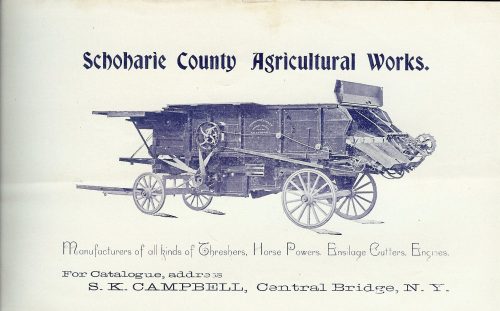 Along the Schoharie, grist mills were erected and saw mills dotted the many feeder streams. At least three paper mills were erected as well as fulling mills, tanneries, carding machines, forges and furnaces, making castings for plows, fanning machines and other early agricultural machines.
Along the Schoharie, grist mills were erected and saw mills dotted the many feeder streams. At least three paper mills were erected as well as fulling mills, tanneries, carding machines, forges and furnaces, making castings for plows, fanning machines and other early agricultural machines.
The area became known for the number of prominent lawyers and professionals living in the and it became known as the aristocratic settlement of the county. Prominent among the lawyers settling here were Issac Hall Tiffany, John C. Wright, John S. Frost, Alexander Cruickshank, John Cummings, and others. John C. Wright was a State Senator when the bill initiated by the inhabitants of the voting district affected was going through the Senate to from the Town of Wright from the old Town of Schoharie.
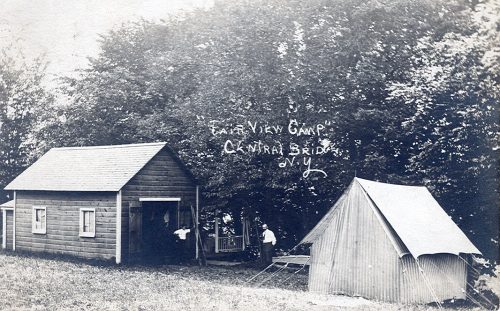
As was popular to ensure success the Town was being named in honor of the Governor, Silas Wright. Senator Wright took the opportunity to amend the bill and set off the 3rd voting district as the new Town of Esperance. So in 1846, Esperance was formed but not without some controversy as the newspaper editors thought it was illegally formed. Also it appears some unhappy people found themselves in this new Town and got themselves back into the old Town of Schoharie in 1850 removing a small slice from the southern border of the Town of Esperance.
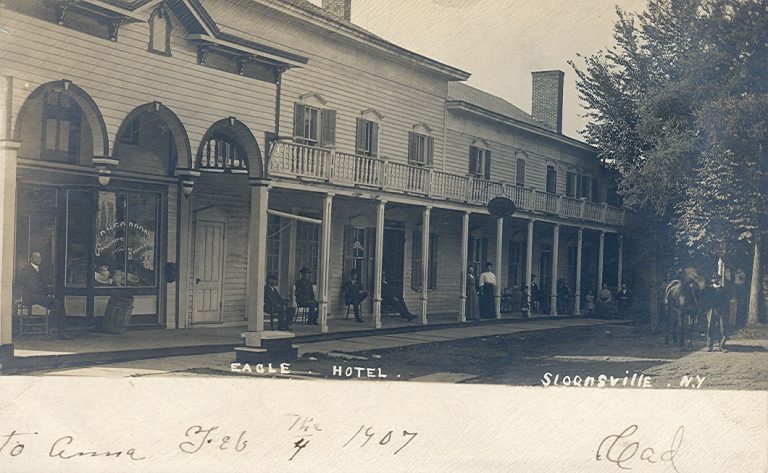
Among the prominent people that lived here or near the Town line was Sheldon Jackson, considered one of the most important Home Missionaries in the Presbyterian Church. He was credited with founding scores of Churches in the West and then establishing the first schools and Presbyterian Churches in Alaska. He was also noted for his reindeer experiment in Alaska to replace the devastated caribou 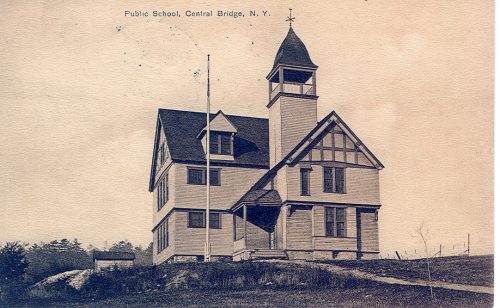 population and serve as domesticated animals for the native peoples. Another was George Westinghouse Sr. and Jr. The father started a large thrashing machine business in Central Bridge where his son George Jr. was born. Enthralled by the large thrashing machines, he became a tinkerer and later an internationally known inventor and founder of the Westinghouse Electric Co.
population and serve as domesticated animals for the native peoples. Another was George Westinghouse Sr. and Jr. The father started a large thrashing machine business in Central Bridge where his son George Jr. was born. Enthralled by the large thrashing machines, he became a tinkerer and later an internationally known inventor and founder of the Westinghouse Electric Co.
Fred Lape a local farm boy grew up to be a College Professor and then returned to the family farm and got interested in rare trees and shrubs through his friend RPI Professor George Landis. Upon the death of Landis in 1950, Fred started the George Landis Arboretum that has grown to hundreds of acres including old growth forests and rare trees and plants from many countries. Landis sponsors many educational programs related to this field. Fred was also the first curator of the Esperance Museum when it opened in the old Village of Esperance School in 1970. Both are a must see to visitors of the Town.
The beauty of the Schoharie Creek and its abundant bass population draw sportsmen to its public access areas. For generations of young people it is a great place for boating and recreation along its winding path towards Burtonville. The beauty of this part of the valley was early captured by artist Thomas Cole one of the founders of the Hudson River School of landscape painters in the 1820s.
It is today, as it has been for hundreds of years, a spot for the traveling public to stop for a rest and enjoy the historic and natural surroundings along U.S. Route 20. We invite you to take a leisurely ride through our scenic Town and cross the Schoharie Creek as other travelers have done for over 200 years.
Useful Information:
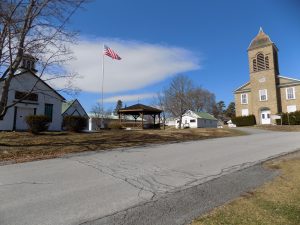
Open Weekends 1 to 4 p.m. Free
Opens July 4th, 2020
https://www.facebook.com/EsperanceHistoricalMuseum/
Esperancehistoricalscociety@gmail.com
(518) 875-6854
123 Church St.
Esperance, NY 12066
2020 Events:
Tentative Meeting Nov. 8, 2020 2 p.m. Covered Dish, Esperance Methodist Ed. Bldg. Topic: History of Photography, speaker Wesley Feuz
Lawn Sale Saturday September 12, 2020 9 a.m. to 3 p.m.
Contacts:
Kenneth Jones, Town and Village Historian
Kjones8@nycap.rr.com
Landis Arboretum
Call (518) 875-6935
http://www.landisarboretum.org/
https://www.facebook.com/LandisArb/
https://www.facebook.com/Esperance-Community-Pride-478703059130312
